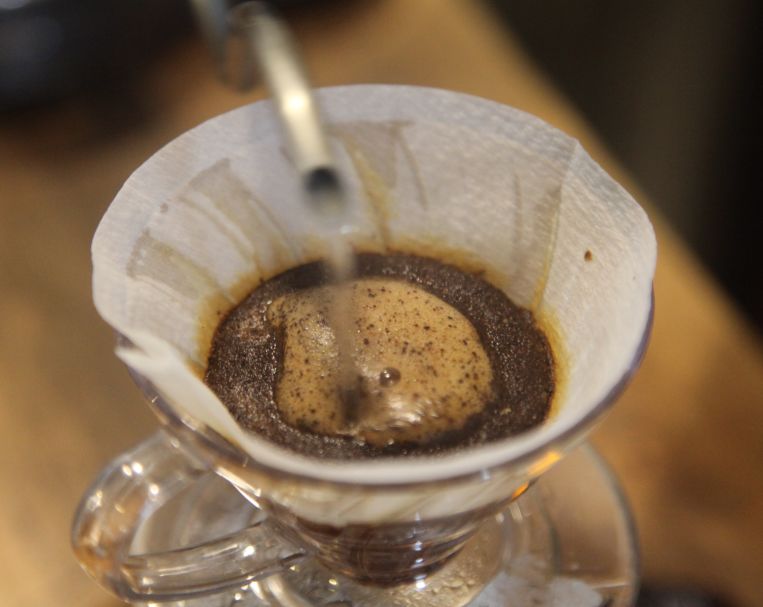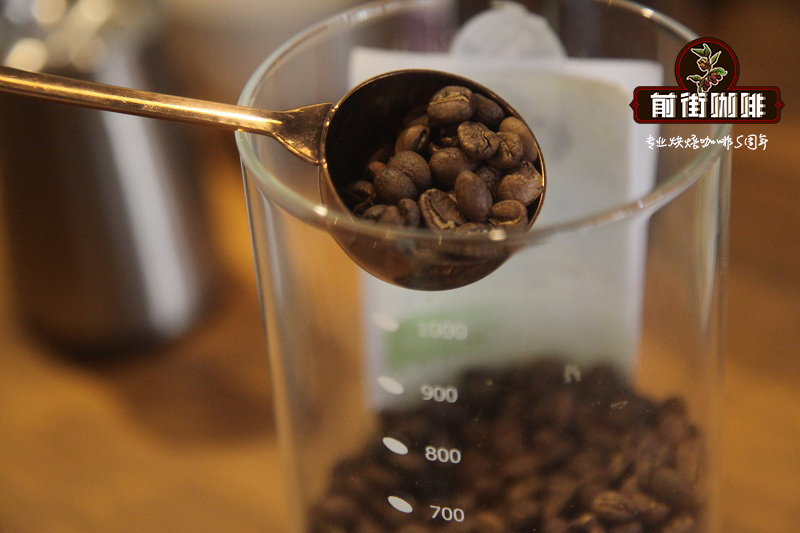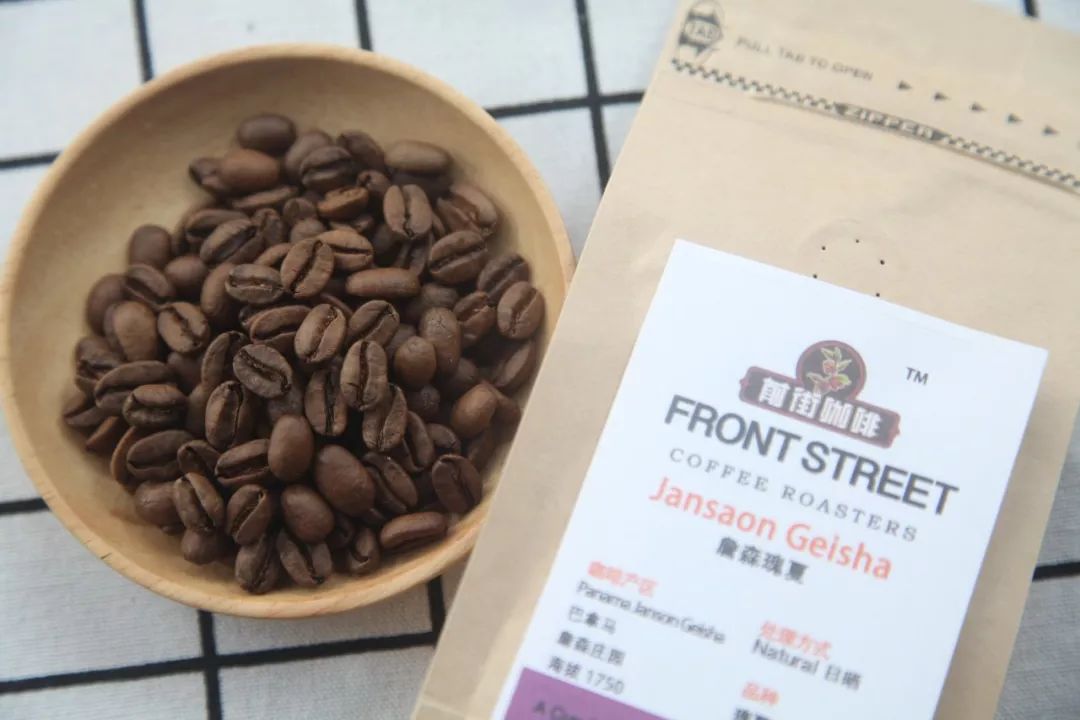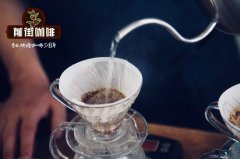Qianjie Coffee hand flushing workshop: how to make "expired" coffee by hand? How to calculate the best flavor period?
Professional coffee knowledge exchange more coffee bean information please follow the coffee workshop (Wechat official account cafe_style)
Everyone must have had the experience: if the coffee has been kept for a long time, do you throw it away? Or do you continue to use it and reluctantly drink a cup of insipid coffee? Is the expired coffee irreparable? The following editor will share with you today's topic of how to make expired coffee by hand.
Coffee "shelf life"
First of all, we make it clear that the so-called shelf life refers to the best taste period of coffee, not the shelf life of food (usually the manufacturer will write a shelf life of one year), and coffee should be kept away from the light in the form of roasted coffee beans. Sealed under cool conditions, no matter how powerful the master is unable to recover.
So how long is the best taste period for coffee? We recommend it as follows: 15-30 days from the time the coffee is roasted. Some coffee can be extended to about 45 days under proper preservation conditions. Therefore, the term "expiration" we mentioned is generally based on 30 days. At this time, the exhaust of coffee beans basically disappears, and the coffee beans roasted in medium and deep depth will be slightly "oiled". However, if the coffee is seriously oiled due to improper preservation, or if it smells only woody, it means that the coffee beans are no longer suitable for tasting. For the sake of health, throw them away.

So if it is preserved well, but how to cook the coffee that is no longer fresh?
First of all, we should understand that the flavor of coffee reaches its peak in the 3rd to 7th day after baking, and then it will be lost over time, leaving only woody flavor. The first flavor substances lost are flowers and fruits, volatile acids, spices and herbs, while nuts, chocolate, caramel and other flavors are relatively difficult to volatilize, and ground coffee powder will lose flavor faster than in the form of coffee beans. This is also the fundamental reason why we want the coffee to be fresh, freshly ground and brewed.
So if you want the coffee after the best taste period to still have rich flower and fruit notes, bright and lively acidity, it's unlikely. However, at this time, the basic taste experience of some coffee, such as chocolate and nutty taste, will be more prominent, and the taste will tend to be balanced, and the complex chemical changes in coffee beans may develop some unexpected flavors, or the flavor that is not so obvious now ~ it is important that you know how to make it.

Here are some basic methods for editors:
1. Change the extraction time
2. Change the water temperature
3. Change the degree of grinding.
This is a state of dynamic equilibrium, for example, if you choose to grind for a long time and rough, then the water temperature will be reduced; if you choose fine grinding, the extraction time will be relatively shortened and the water temperature will be lowered. No matter how you adjust it, all we want is a good cup of coffee. Try it a few more times and find the most suitable way to save your coffee.
The method recommended by the editor is to use coarser grinding to reduce the water temperature and prolong the extraction time to extract coffee.
Here is an example of [Jensen] Rose Summer Coffee, which has been preserved in the shade for 50 days. Use a V60 filter cup with a water temperature of 88 degrees (90,91 degrees when fresh) and a water-powder ratio of 1:15.

1. Rough grinding, as the volatile aromatic substances of coffee have been basically lost, fine grinding extraction will be more likely to bring out bitter taste, choose a thicker grinding degree can effectively avoid excessive extraction.
two。 The steaming time is shortened, the carbon dioxide in the coffee is also lost, and there will be no "hamburger". Water can easily permeate every coffee powder, so there is no need for long steaming and exhaust, otherwise it will cause excessive steaming and over-extraction.
3. It is divided into 2-3 stages, the water flow height should not be too high so as not to stir too much, rush in a circle along the size of a small coin in the center, and force out the flavor substance while stewing, you can see the foam being pressed out slowly.
When the water level rises to normal, you can stop the water injection, and then flush it when the water level drops about 1 to 3. At this time, you can increase the cooking range, but not to the filter paper, and the water flow height should be reduced. You must treat it gently at this time. The whole extraction time is slightly longer, which can bring out more sweetness.
Jensen rose summer, although faded from the flowers and fruit, brings out the aroma of red wine, with a supple taste, round acidity, sweetness of caramel and walnut finish.
When you encounter "out-of-date" coffee in the future, you don't have to worry about it any more, but it's best to drink it fresh!
[previous review]
Daily test | how much influence does the amount of steaming water have on coffee extraction?
Daily test | should the steaming time of 30 seconds be calculated from or after water injection?
Doubt about the ratio of powder to water | whether water is calculated as the total amount of water injection or the final amount of extraction.
Hand flushing | do you also pay attention to steaming and water injection? How to inject water into steaming?
Front Street Coffee
Important Notice :
前街咖啡 FrontStreet Coffee has moved to new addredd:
FrontStreet Coffee Address: 315,Donghua East Road,GuangZhou
Tel:020 38364473
- Prev

Every coffee bean needs to be screened, graded and tested. Why?
Professional coffee knowledge exchange more coffee bean information Please pay attention to coffee workshop (Wechat official account cafe_style) ochratoxin (Ochratoxin A) is a secondary metabolite secreted by Penicillium and Aspergillus, with nephrotoxicity, immunosuppression, carcinogenicity, etc., belongs to 2B class carcinogens. Ochratoxin fungi are common in nature, including soybeans, peanuts, corn,
- Next

COE Coffee Excellence Cup Competition introduces the auction time of Cup of Excellence excellent Cup coffee beans.
CoE, or CupofExcellence, stands for a perfect cup of coffee, also known as the excellent cup. It is the most important boutique coffee bean competition in the world. First held by ACE in Brazil in 1999, it is now the most famous and authoritative boutique coffee competition in the world.
Related
- Beginners will see the "Coffee pull flower" guide!
- What is the difference between ice blog purified milk and ordinary milk coffee?
- Why is the Philippines the largest producer of crops in Liberia?
- For coffee extraction, should the fine powder be retained?
- How does extracted espresso fill pressed powder? How much strength does it take to press the powder?
- How to make jasmine cold extract coffee? Is the jasmine + latte good?
- Will this little toy really make the coffee taste better? How does Lily Drip affect coffee extraction?
- Will the action of slapping the filter cup also affect coffee extraction?
- What's the difference between powder-to-water ratio and powder-to-liquid ratio?
- What is the Ethiopian local species? What does it have to do with Heirloom native species?

